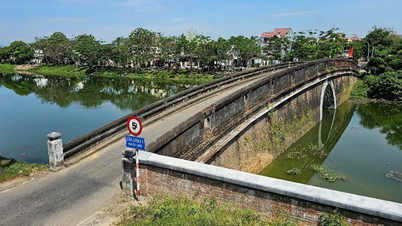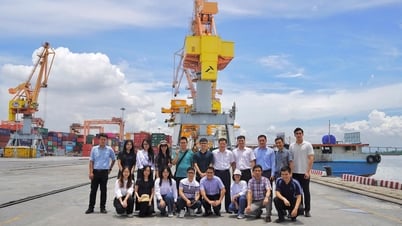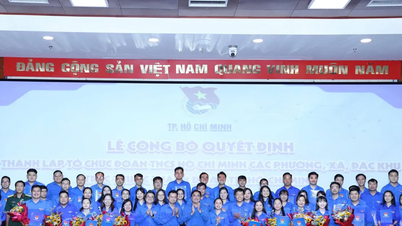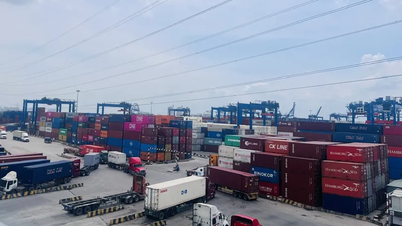 |
| From July 1, the new ward will receive additional administrative procedures that are under the jurisdiction of the district level, thereby expanding the scope of local settlement, ensuring smoothness, efficiency and convenience for the people. (Photo: Thanh Long) |
Merge provinces/cities, increase the size of communes/wards, expand administrative boundaries to promote the combined planning strengths of each locality in conjunction with national master planning, regional, and the development strategy of sectors and the socio -economic development of the country.
No district level organization to reduce intermediate levels, save administrative costs, and improve management efficiency. This work has been implemented quickly with high determination.
Many intermediate levels lead to people having to spend time going through many procedural “doors”. Trouble and harassment occur, causing obstacles, creating “bottlenecks”, lacking development opportunities, causing frustration for people. The cost of operating a large organizational system naturally reduces resources for investment and development…
Multiple intermediaries and cumbersome administrative procedures slow down the decision-making process from the government and the immediate result is hindering the operation of businesses. These are major “obstacles” to develop.
These are recognized and adjusted in the plan to build a two-level local government organization model approved by the 11th Conference of the 13th Central Executive Committee with Resolution No. 60-NQ/TW, dated April 12, 2025.
The administrative reorganization has been implemented synchronously. Local governments are organized at two levels: province/city and groundswells level: commune/ward/special zone. The district level will cease to operate from July 1, 2025. It is notable that the progress of reorganization of local administrative units has been completed one month ahead of schedule. After the reorganization, the number of provinces/cities has been reduced from 63 to 34; from 10,035 communes/wards and towns to 3,321 grassroots units.
Along with the merger of provinces/cities and wards/communes is a revolution in reforming the apparatus with the goal of "streamlining - compactness - strength", operating effectively, efficiently and effectively with a more professional and dedicated staff. The merger of departments and branches with similar functions - such as the Department of Transport and the Department of Construction, the Department of Planning and Investment with the Department of Finance, the Department of Labor - Invalids and Social Affairs and the Department of Home Affairs, the Department of Science and Technology and the Department of Information and Communications, local newspapers and radio stations... in provinces and cities has strengthened coordination, limited overlap and improved management efficiency.
In the new model, the central level focuses on policy making and strategic orientation. The local level is given more authority in implementation. This will help shorten the decision-making process, speed up work processing, and enhance accountability of agencies, units, and organizations. Merging together with streamlining the apparatus paves the way for decentralization and delegation of authority according to the motto "local decision, local action, local responsibility". The accountability of local governments will be enhanced.
Improving the effectiveness and efficiency of leadership and management is not only an internal requirement, but also an inevitable condition for Vietnam to move forward in the context of global integration. Reducing intermediate levels and streamlining the administrative apparatus is identified as a strategic and brisk task. A streamlined, professional, digitalized and effectively operated government apparatus will be a tool to promote a turning point in the country's development.
Source: https://baoquocte.vn/van-hanh-mo-hinh-chinh-quyen-hai-cap-va-quyet-tam-nang-cao-hieu-qua-hoat-dong-319817.html































































































![[OCOP REVIEW] Bay Quyen sticky rice cake: A hometown specialty that has reached new heights thanks to its brand reputation](https://vphoto.vietnam.vn/thumb/402x226/vietnam/resource/IMAGE/2025/7/3/1a7e35c028bf46199ee1ec6b3ba0069e)










Comment (0)